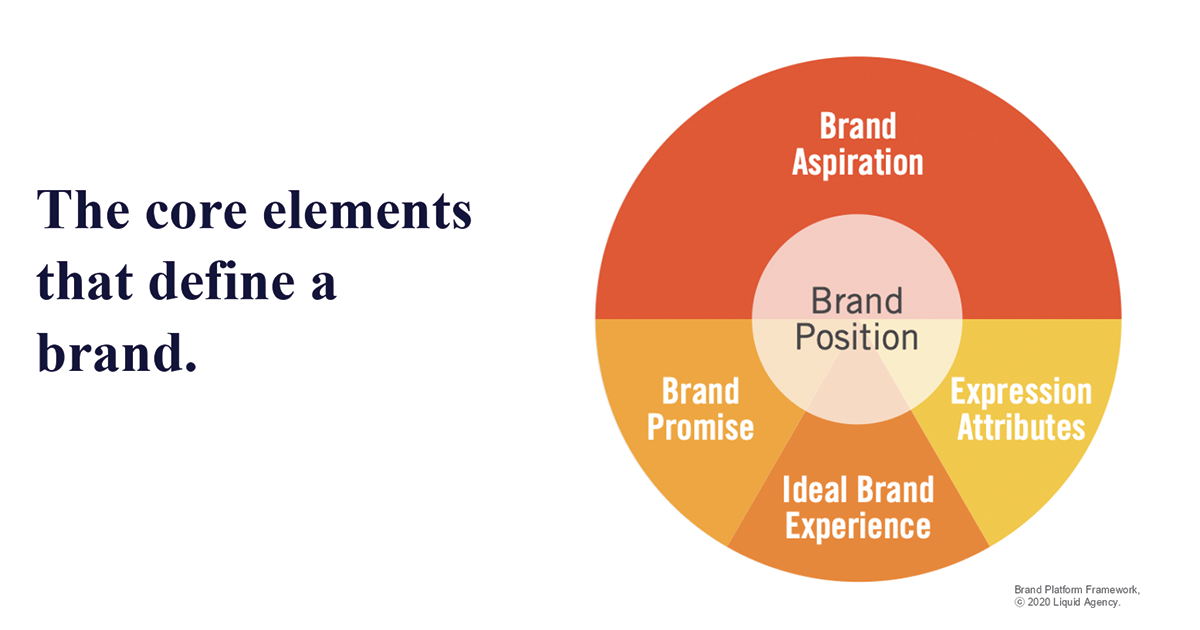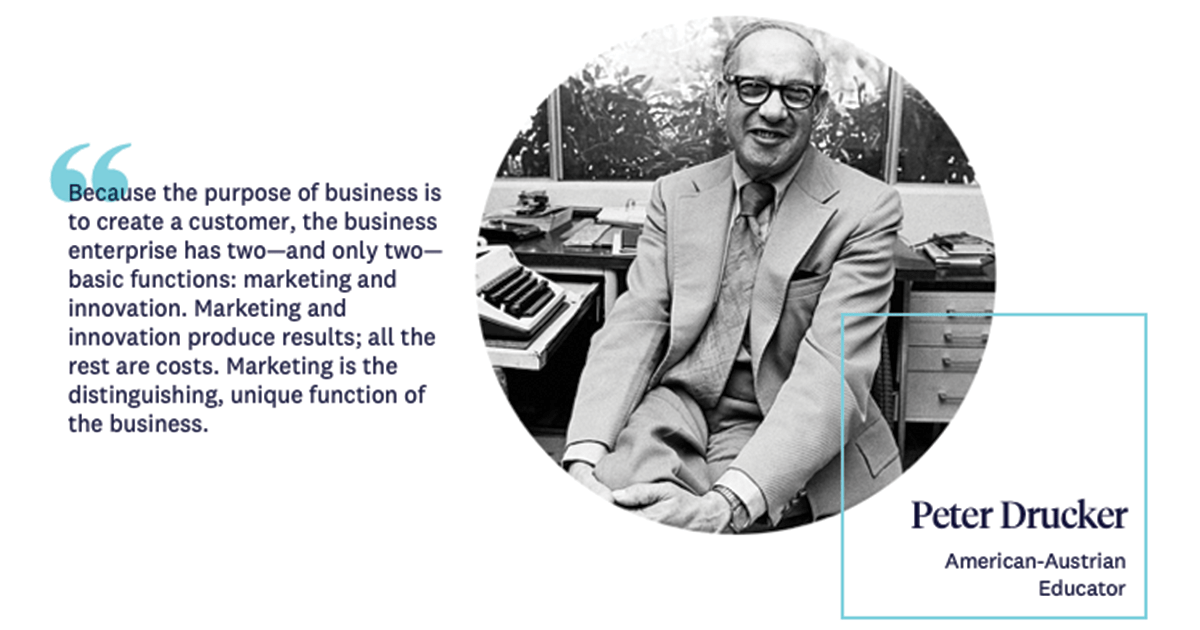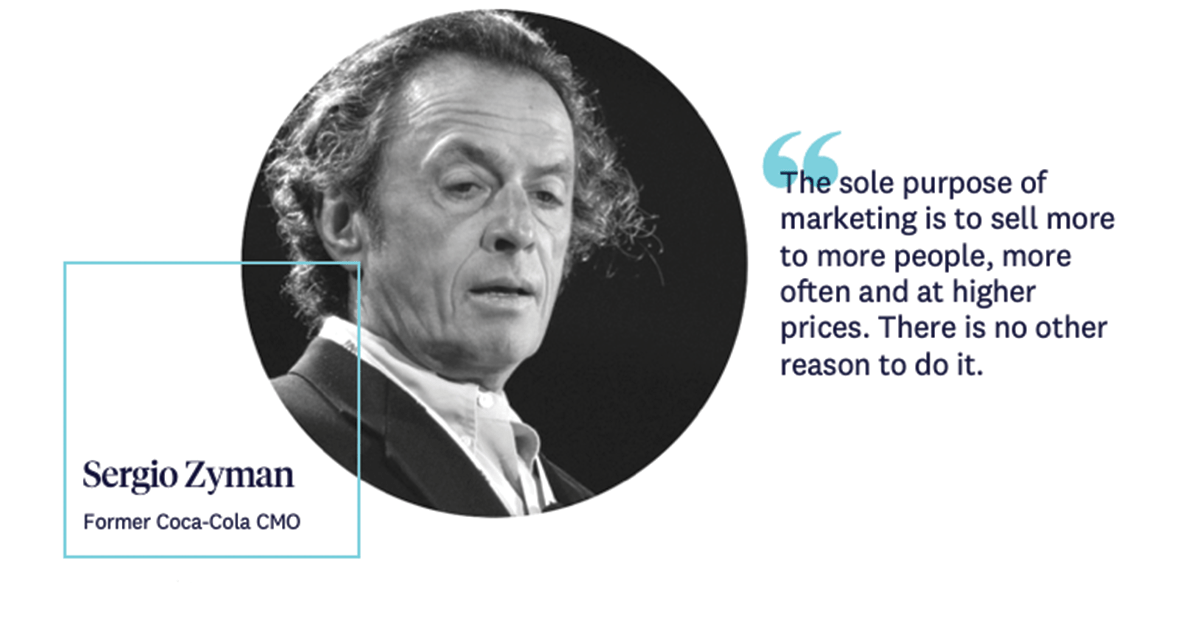Connecting Brand Strategy and Marketing Execution in Times of Crisis

A big thanks goes out to those who were able to join our joint webinar with Acoustic on Thursday, April 16th. Both for taking time out of your day and for your thoughtful questions and contributions to the discussion.
If you didn’t make it to the presentation online, worry not. Here’s a recap of the action hosted by Norman Guadagno, CMO of Acoustic, and Dennis Hahn, Chief Strategy Officer at Liquid.
The webinar began with the most important question: Why are we here?
And although the title of the discussion hinted at an answer, the question was still very necessary to pose. Is a marketing-first approach appropriate, or should brand-first take the lead? Or should they both be working symbiotically, in tandem?
To shed some light on the subject, it was important to break it down into its pieces. First, by defining branding and marketing. Then, by exploring how the two disciplines can align to help an organization stay true to itself and its customers. Especially in the current landscape where answers seem elusive.
Defining brand and brand culture.
Dennis from Liquid defined branding as the act of creating shared meaning about a company, product or service. This foundation of meaning needs to be connected to concepts that rarely change, such as your organization’s purpose and values, which guide behavior.
The easiest way to illustrate this is with a brand platform framework. We saw that brand position sits in the middle, representing what the customer believes the brand stands for. It’s surrounded by the aspiration (what drives the brand forward), experience attributes (emotional connections that define the brand), brand experience (the impression left on its audience) and the promise (how the brand delivers to its customer).

In addition to the brand platform framework, Dennis also shared the Liquid platform for defining organizational culture. Within this framework, purpose sits in the middle, i.e. what drives employees to deliver for a brand. Then surrounding the purpose, you’ll find the ideal culture (how the culture delivers for the brand), the values (the moral compass for decision making), the ways of working (behaviors that guide employees day to day) and finally, the employee value proposition (the value promised to employees for being part of the team).

Defining marketing.
Next, it was time for Norman from Acoustic to define marketing. And he did so by reminding the audience there are myriad ways of explaining this very broad term. So he began by giving credence to the words of some of the most successful minds in the discipline. These included Peter Drucker, dubbed “the man who invented management,” Former Coca-Cola CMO Sergio Zyman, and best-selling marketing author Seth Godin.



Definition of marketing in 2020.
Norman summarized these three sentiments by giving his definition of marketing in 2020. He stated that today, the discipline blends together the persuasive components espoused by Zyman and Godin with the broader mandate from Drucker. In other words, if branding opens the door, marketing gets you in.
He went on to explain how branding establishes the belief system and serves as the foundation, while marketing promotes the brand and increases awareness through storytelling. And that brand building is an enterprise activity, with marketing only contributing up to 20% of a company’s brand equity. While marketing is the responsibility of the marketing department, which needs to coordinate with the product development team and sales. So it’s imperative that marketing be constantly and diligently aware of how the messaging (i.e. a campaign) ladders up to support the brand as a whole.

Managing a crisis.
The discussion then turned to the topic at hand: how brands should communicate in a crisis. A crisis can be either self-inflicted (think Papa John’s) or as a result of a sea change in an industry (think Blockbuster). Clearly, we’re involved in a crisis that’s global in nature, affecting nearly every brand on the planet.
In light of this current situation, Dennis and Norman emphasized the importance of brand and marketing coming together as one united front. They argued that companies’ agendas needed to take a back seat. And since marketing should address a need, they asked the audience to ask themselves, “What do your customers and employees need right now?”
Examples?
Some other helpful tips the pair imparted to the group were the importance of knowing what your brand has to offer people during a time of need, as well as knowing exactly who your message is intended for. When this is done in a clear, empathetic and memorable way, chances are you’re on the right track.
Conclusion: Never lose sight of what your brand stands for.
A final note from Dennis and Norman was the importance of never losing sight of what your brand stands for. The strongest brands reinforce meaning through actions, so what you do might be even more important than what you say. The act of going above and beyond for your customers and employees could very well be the message itself.
Watch the full webinar on-demmand, here.
If your company needs help with quick-turn communications to your customers and/or employees during the COVID-19 crisis, or you’d like to discuss longer-term strategies for your brand, Liquid is here to help. Contact us here.

